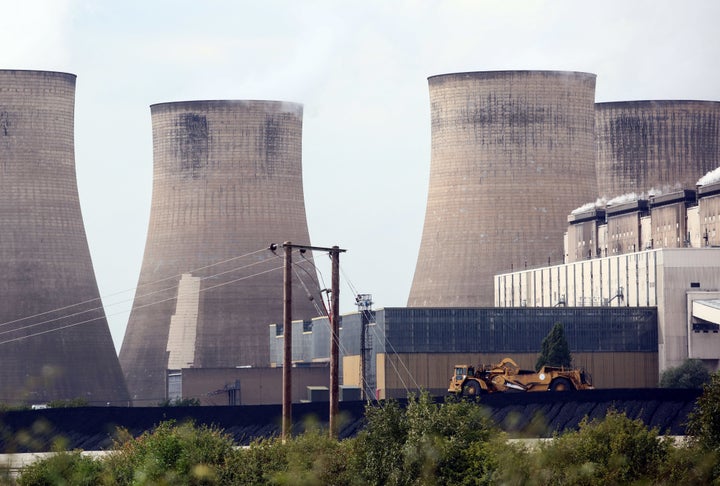
The growth in new energy technologies has surged in the past decade, sparking the prospect of a world free from fossil fuels. The rapid decline in the cost of these new ways to generate and use energy has generated a growing belief that we can achieve a cleaner, more sustainable environment and a healthier future.
While renewable energy and similar technologies offer tremendous benefits, there are some concerns about how this will all work in the future. For instance, renewable energy from sun and wind is weather dependent, causing doubt about our ability to cut ties completely with coal, oil and natural gas. A rapid growth in electric mobility means we need to charge our cars, and many worry whether our energy system will be able to adapt to the increasing demand of charging all of our cars.
However, such transitions take time, and while we think that changes now happen overnight, in fact, people and systems take time to adopt new technologies. For energy, it helps to consider how far we have come already. For example, just six years ago, coal was the largest source of energy in the UK. Now it is just a few percent and will be phased out soon. A few years ago, it was common for people to say that wind and solar could not exist without subsidies, but the steady fall in prices means that now they are both lower in cost than traditional energy sources by a long way in many markets. As electric mobility grows, prices in energy battery storage have also dropped exponentially, and this will continue as technology advances and production scales.
Indeed, renewable energy has developed at a pace that we could not have imagined two or three decades ago. Records are falling in countries all over the world in terms of the amount of renewable power generation along with the cost of adding more. In 2017 in Denmark, wind turbines notched up a national and world record, delivering 43.4 percent of the country’s overall electricity consumption, according to the Danish Ministry of Energy, Utilities and Climate. Denmark often runs its entire country on 100 percent wind energy, but it is not alone. Germany’s renewable energy production has surpassed the country’s electricity demand multiple times, and wind alone accounted for 20.8% of total electricity demand last year, according to the European Network of Transmission System Operators, ENTSO-E. Portugal has had several multi-day streaks where all of its energy is from renewables – and excess is exported.
The pace of change is swift. For example, Scotland produced a record amount of energy from renewables for more than two thirds of its electricity in 2017, which was up 26 percent compared to 2016. Indeed, according to statistics on energy trends released by the UK Department for Business, Energy and Industrial Strategy (BEIS) on 31 May this year, the output from bioenergy and wind, solar and hydro is now nearly 10 times higher than coal. The overall energy from wind, solar and natural flow hydro increased by 26 percent to a record high level between 2016 and 2017, with production of bioenergy and waste rising by 11.6 percent.
What is driving this growth is a steady fall in the cost of renewables. In last year’s study from Bloomberg New Energy Finance (BNEF) aptly titled “Beyond the tipping point”, it was shown that in most of Europe, sourcing new energy from wind and solar is already less expensive than any other form of energy. Furthermore, in the not too distant future, we will build wind and solar that will cost less than even existing coal and gas plants. Renewables have the major advantage that once built, the running costs are very low to produce energy that is clean and doesn’t produce air-choking greenhouse gases.
However, as the BNEF study also made clear, much more flexibility is going to be required for this new energy system to provide the reliability we require. This includes interconnected systems, control over when and how we use energy, and central to all of this - safe, reliable and efficient energy storage.
Even now, battery storage is seen as the next disruptive technology in the power sector. The costs of Lithium Ion battery packs for cars and storage have plummeted by 90% in just 10 years. Better technologies and scaling are enabling the ability to store energy when it is most affordable – such as from solar at midday – and then to use it when energy would otherwise cost more to produce. Storage is already being used and is growing in homes, businesses, manufacturing plants, and at grid level.
The rationale for storage differs by stakeholder, but all uses come down to basically helping match supply and demand and making the energy system overall more reliable and cost efficient. Energy storage is also set to be a major breakthrough, particularly in developing countries where 1.4 billion people don’t have access to the grid. Other storage technologies, ranging from so called “flow batteries,” to thermal storage to compressed air that provide longer duration of storage, are all improving and costs are coming down.
Despite these innovations and the advances in storage, there are still major challenges when it comes to transitioning an energy system that has worked in one direction for the last 100 plus years. Part of increasing flexibility requires that we change how we view the energy markets. We are moving from a world of producers and consumers to “prosumers” where one can be both as needed. For example, the growth in electrical vehicles requires infrastructure, such as offering public battery charging stations at service stations for electric cars in future. But electric vehicles are also storing electricity which can be sent back to the grid when mobility is not needed. We are seeing companies like Nissan developing offers for vehicle to grid, where the car owner may make more money from the battery in the car than the car costs to drive.
There is a clear shift in desire for the public and business to live in a more sustainable world, which in turn is manifesting in new and progressive government policies around energy. Smart policy makers know that change does not happen overnight, but that we need clear direction and to move steadily along the right path. The EU, China, and countries like Chile and South Africa have been encouraging the investment in low-carbon technology for years, and most other regions and countries are jumping onto the trend. This in turn is continuing to drive the research and technological development that will continue to advance lower costs and more efficiency in how we make and use energy.
People have been harnessing the power of the wind, sun, and other renewable sources for thousands of years. It is only relatively recently that we started using coal, oil, and natural gas, yet look at what has been achieved. Now we are on a new transition toward the realization of a fossil-free future world. People worry about what happens along the way, but should remember that the future is not tomorrow. We have come very far, very fast, and the lights have stayed on, while costs have continued their steady fall. We do not need to be afraid, indeed we should be excited about the future. A world where energy is clean, cost effective and reliable for everyone is now within sight.
